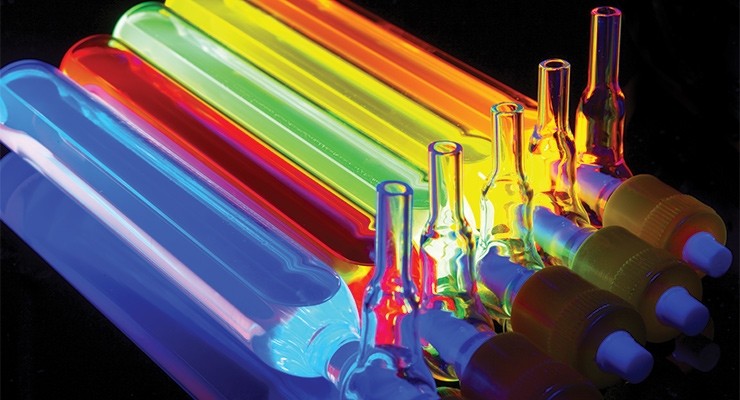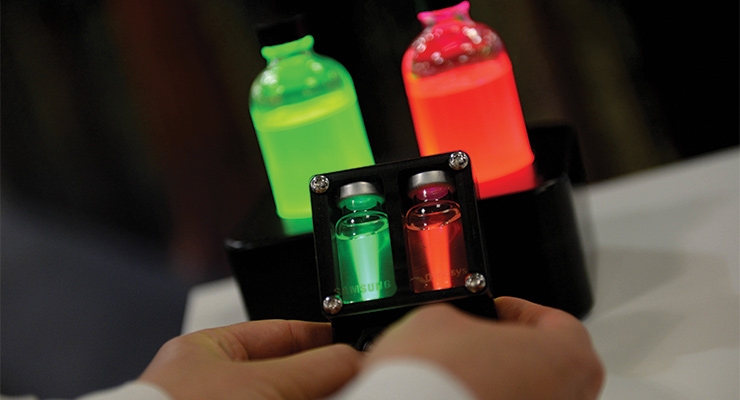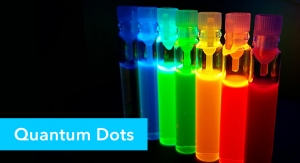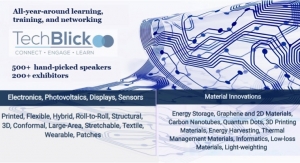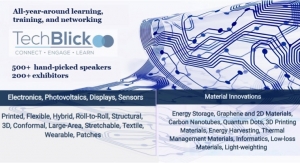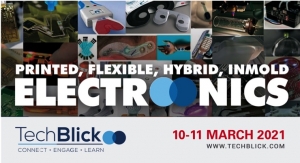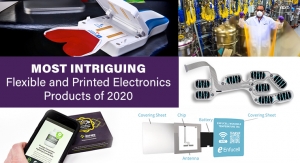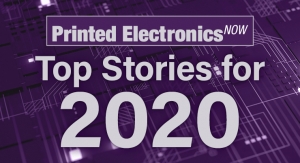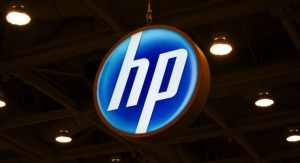David Savastano, Editor11.10.17
In the past two years, there has been an acceleration in quantum dots being used in the commercial marketplace for TVs, displays and other technologies.
Keith Wiggins, COO of Nanoco Technologies, said that as seen at the Consumer Electronics Show (CES) and other leading display events over the last two years, quantum dots have quickly become the next big thing in the display industry, with a number of electronic display manufacturers incorporating these tiny semiconductor materials into their LCD TVs.
“Market research shows revenue projections of the 4K display market reaching $52 billion by 2020, with QD-TV shipments forecasted to grow from five million in 2017 to 50 million by 2020,” Wiggins noted.
Russell Kempt, Nanosys’ VP of sales and marketing, said that Nanosys has seen a rapid acceleration in commercial adoption of quantum dots for displays.
“One segment that has really taken off this year is the market for monitors designed for gaming and creative professionals,” Kempt said. “These users demand the best performance from their displays, and so we’ve seen a proliferation of QD products designed for this audience.”
“The excitement is due to the technology’s unique ability to efficiently absorb and convert light to very specific reds, greens, and blues, offering more beautiful, vibrant color performance than traditional LCD technology,” Wiggins added. “Because size dictates the color quantum dots emit, they can be finely tuned to meet specifications for optimal display performance. What’s even more exciting is to see major manufacturers such as Samsung and AUO using cadmium-free quantum dots in their new, highly-acclaimed televisions and display modules.
“With more recent advancements in cadmium-free quantum dots, and due to the sustainable nature of the chemical makeup (most notably, its non-toxicity), this innovative technology has great potential for the marketplace beyond displays and is being applied to other areas such as grow lighting, bio-imaging and cosmetic therapy,” Wiggins concluded.
Nanosys’ Kempt said that one key to the proliferation of quantum dot technology is that QDs offer LCD makers a unique technology differentiator to help them outperform OLED products at the high end of the market.
“Looking ahead, we see quantum dot technology adoption continuing to accelerate as it moves into mid-tier and mainstream products,” Kempt added.
Wiggins said that with advancements in TV technology over recent years, including increasingly larger, flatter or curved 4K displays with Ultra HD resolution, manufacturers are in a race to keep up with competitive products and consumer demands.
“A major contributor to these incredible display advancements is quantum dot technology, delivering near perfect performance of every shade of the color spectrum,” Wiggins noted. “Quantum dots efficiently absorb and convert light, bringing color conversion and peak luminance up to 94% of area coverage of UHDTVs’ BT.2020 color gamut. Quantum dot enhanced displays rival OLEDs with superior brightness and color performance benefits at a much lower cost to the manufacturer and the consumer. Yet we’ve only scratched the surface of how quantum dots can reimagine the display industry.”
Flexible and Printed Quantum Dots
There has been a lot of discussions over the years about both flexible displays and the possibility of printing these displays. Leaders in the quantum dot field say that both of these scenarios are strong possibilities.
“The short answer is, yes, quantum dots can absolutely be deployed in flexible displays,” said Nanosys’ Kempt. “In fact, all of the research we are doing today for flexible displays relies on printing techniques. Nanosys is leading the way in the development of EL QD displays. We have already achieved better than 10% external quantum efficiency (EQE) for our blue cadmium free EL-QD emitter materials. This is a key milestone in the development of EL QD displays. For context, the best commercially available blue OLEDs are not much better. However, there is more work to do before EL QD displays are fully commercialized. We expect to see displays in the three- to five-year time frame.”
“Due to the flexible nature of quantum dots, this technology can be applied to all shapes and sizes, from large TVs to small smartphones, and every size display in between, as well as flat or curved devices,” Wiggins observed. “Nanoco is in discussion with a number of customers for potential work in innovative areas such as QD color filters and QD EL, which are future applications of QD technology. As with all new applications, there are certain hurdles that must be overcome in order to commercialize the technology.
“In the case of QD color filters, we have a different set of challenges to QD films,” added Wiggins. “For example, do we use photolithography or inkjet printing techniques to deposit the QDs? What is the compatibility of QDs to solvents and photoresists? What are the requirements for absorption to thickness etc.? Our research, testing and deep experience in CFQD film and technology development enables us to work through this.”
Cadmium-Free Quantum Dots
As noted in the sidebar on page 21, there has been a long debate over the use of cadmium and cadmium-free products in displays. The battle seems to be nearly over, with cadmium-free technology clearly leading the market.
“There will be some impact, but the impact is not much. According to the Quantum Dot 2017 Report, 4th edition, Touch Display Research forecasted that over 70% of the QLED TVs will be Cd-free or Cd-safe in 2017,” said Dr. Jennifer Colegrove, CEO and principal analyst of touch screen and emerging display technologies at Touch Display Research Inc.. “Cd-safe means contains <100 ppm Cd in the component to be compatible with the RoHS regulation.
“Samsung’s QLED TVs were all cadmium-free since they started in February 2015,” Dr. Colegrove added. “We forecasted that several other TV brands will have both Cd-type QLED TV and Cd-free and Cd-safe QLED TVs for different markets. If they want to sell the Europe, they must have Cd-free and Cd-safe QLED TVs.”
Jeff Yurek, director of marketing and investor relations for Nanosys, noted that Nanosys has a unique perspective on this as a developer of both cadmium and cadmium-free quantum dot technologies.
“Nanosys has design wins at three of the top four TV makers globally and our technology is shipping in more than 50 different display SKUs this year from tablets to monitors to TVs,” Yurek reported. “Currently, a greater number of CE brands are shipping products based on our traditional cadmium-based materials. However, the highest volume selling single quantum dot TV SKU on the market today is based on our cadmium-free quantum dot technology. Looking ahead, we see that mix continuing to shift towards our cadmium-free and Hyperion products.”
Dr. Eric Virey, senior market and technology analyst –LED, Sapphire and Display for Yole Développement, a market research & strategy consulting company, said that the EU regulations will have little bearing on the market, as TV manufacturers aren’t really interested in using cadmium-based quantum dots if those don’t meet the initial RoHS requirement of <100 ppm.
“For TV and display manufacturers, the change in legislation has no impact,” Dr. Virey continued. “Even if this was only European-based on RoHS, it has impact worldwide. No TV manufacturer will make a TV just for the European market. There is no real cost difference between cadmium and cadmium-free quantum dots anymore.”
“Quantum Materials has made great strides in meeting or exceeding cadmium QD performance with non-Cd QD over the last nine months and believe we are in an enviable position to provide significant quantities of this materials now,” said Steve Squires, Quantum Materials’ founder and CEO.“As such, we have no commercial concern regarding the ban.”
“Nanosys does not see any impact to our business from currently planned changes to regulations in Europe or elsewhere. Due to the industry trend away from cadmium, suppliers who only offer cadmium-based materials may be affected in the long run,” Yurek noted.
“Cadmium-free quantum dot TVs are growing in percentage,” said Wiggins. “Samsung’s QLED product is the fastest-growing high color gamut TV or display on the market today. They’ve been growing their business year on year.”
“Samsung already is strongly committed to cadmium-free products - it is even a selling point for them that their TVs are environmentally friendly,” Dr. Virey concluded. “Samsung has been very clear from the beginning that there is no cadmium in their TVs and gaming displays. Sony used cadmium-based QDs in 2013 in one TV model, and they pulled back, so no Japanese company is using any quantum dots. They use narrow band phosphors, but they may go back in a year. No consumer electronics company wants to be exposed to a smear campaign, even if it meets the RoHS legislation.”
There has been much discussion about the European Commission’s decisions regarding cadmium in TVs and displays. While the EC appears to be basically pushing a decision off until 2019, market factors are already in play.
Dr. Eric Virey, senior market and technology analyst – LED, Sapphire & Display for Yole Développement, a market research & strategy consulting company, noted that the debate over extending the exemption for cadmium in quantum dots has its beginnings in the initial EU regulations on RoHS (Restriction of Hazardous Substances), which limits the contents on certain compounds they consider toxic, including heavy metals like lead and cadmium.
“It’s a blanket legislation that covers toxic materials for consumer electronics applications,” Dr. Virey said. “The legislation allows industries to apply for exemptions if there are no alternatives.
“As for quantum dots in TVs, around 2011 and 2012, the quantum dot industry was finally on the verge of becoming a real commercial success, and not just a science project, and TV and display makers were considering integrating quantum dots in their products because of improved color rendering and power consumption,” Dr. Virey continued. “The problem was that the leading quantum dots performance-wise were all based on cadmium, which couldn’t meet RoHS limits of 100 ppm.”
As a result, companies began lobbying for an exemption.
“Some of the leading players in the industry like QD Vision embarked on applying for an exemption,” Dr. Virey recalled. “The initial exemption was granted at 10 µg/mm2 of display surface. But at the same time, you had other quantum dot companies like Nanoco that were working hard on cadmium-free quantum dots using indium-based compositions, and while the performance was not as good as cadmium-based, it still made a good TV. Nanoco embarked on fighting the exemption, and it became an industry feud.”
Dr. Virey said that the first exemption was set to expire in July 2014, but was delayed until January 2015, when the European Commission (EC) proposed to renew the exemption until June 2018, but in May 2015, the European Parliament refused to vote.
“They realized that Samsung, the leading QD display maker, was using cadmium-free quantum dots, so why do this?,” Dr. Virey added. “The EC then reevaluated their decision, and a consulting company came back with a lower limit of 0.2 µg/mm2. The EC got that report in June 2016, and in August 2017, the EC issued a proposal to renew the exemption with the lower limit. It is still just a proposal that needs to be ratified by the European Parliament. If it goes with the plan, it could be voted in November 2017, and go through 2019, so you can still use cadmium. After that, it will go back to the original restrictions.
“In early 2015, the European Commission has granted an exemption to the Restriction of Hazardous Substances (RoHS 2) Directive for Electrical and Electronic Equipment (EEE),” said Dr. Colegrove, CEO and principal analyst of touch screen and emerging display technologies at Touch Display Research Inc. “At that time in January 2015, Cd-free quantum dot TV was not in the market yet. The first Cd-free quantum dot TV entered the market in February 2015 by Samsung. Fast forward to August 2017, the quantum dot market has dramatically changed.”
“There has been no ‘ban’ on cadmium for TVs and displays in Europe,” said Jeff Yurek, director of marketing and investor relations for Nanosys. “In fact, the EU is currently preparing to extend a regulation that allows current cadmium levels for a further two years due to the unmatched energy efficiency benefits of cadmium-containing quantum dots.”
Keith Wiggins, COO of Nanoco Technologies, said that the popularity of cadmium-free TVs has rendered the use of cadmium rather academic.
“Cadmium has been an unwanted distraction in the QD marketplace for many years. Most, if not all, cadmium-based product display launches have failed to take off,” Wiggins added. “Consumers are aware of cadmium and Corporate Social Responsibility (CSR) policy within many established international brands prevented them from using cadmium. It was only when cadmium-free based technology became available that the benefits of QD technology could be realized and the market took off in 2014.”
Colegrove anticipates that the rest of the world will likely follow Europe’s lead regarding cadmium.
“Americas and most countries in Asia doesn’t have restrictions on cadmium currently, but we forecast they will follow the European’s regulation after 2019,” Dr. Colegrove added.
Keith Wiggins, COO of Nanoco Technologies, said that as seen at the Consumer Electronics Show (CES) and other leading display events over the last two years, quantum dots have quickly become the next big thing in the display industry, with a number of electronic display manufacturers incorporating these tiny semiconductor materials into their LCD TVs.
“Market research shows revenue projections of the 4K display market reaching $52 billion by 2020, with QD-TV shipments forecasted to grow from five million in 2017 to 50 million by 2020,” Wiggins noted.
Russell Kempt, Nanosys’ VP of sales and marketing, said that Nanosys has seen a rapid acceleration in commercial adoption of quantum dots for displays.
“One segment that has really taken off this year is the market for monitors designed for gaming and creative professionals,” Kempt said. “These users demand the best performance from their displays, and so we’ve seen a proliferation of QD products designed for this audience.”
“The excitement is due to the technology’s unique ability to efficiently absorb and convert light to very specific reds, greens, and blues, offering more beautiful, vibrant color performance than traditional LCD technology,” Wiggins added. “Because size dictates the color quantum dots emit, they can be finely tuned to meet specifications for optimal display performance. What’s even more exciting is to see major manufacturers such as Samsung and AUO using cadmium-free quantum dots in their new, highly-acclaimed televisions and display modules.
“With more recent advancements in cadmium-free quantum dots, and due to the sustainable nature of the chemical makeup (most notably, its non-toxicity), this innovative technology has great potential for the marketplace beyond displays and is being applied to other areas such as grow lighting, bio-imaging and cosmetic therapy,” Wiggins concluded.
Nanosys’ Kempt said that one key to the proliferation of quantum dot technology is that QDs offer LCD makers a unique technology differentiator to help them outperform OLED products at the high end of the market.
“Looking ahead, we see quantum dot technology adoption continuing to accelerate as it moves into mid-tier and mainstream products,” Kempt added.
Wiggins said that with advancements in TV technology over recent years, including increasingly larger, flatter or curved 4K displays with Ultra HD resolution, manufacturers are in a race to keep up with competitive products and consumer demands.
“A major contributor to these incredible display advancements is quantum dot technology, delivering near perfect performance of every shade of the color spectrum,” Wiggins noted. “Quantum dots efficiently absorb and convert light, bringing color conversion and peak luminance up to 94% of area coverage of UHDTVs’ BT.2020 color gamut. Quantum dot enhanced displays rival OLEDs with superior brightness and color performance benefits at a much lower cost to the manufacturer and the consumer. Yet we’ve only scratched the surface of how quantum dots can reimagine the display industry.”
Flexible and Printed Quantum Dots
There has been a lot of discussions over the years about both flexible displays and the possibility of printing these displays. Leaders in the quantum dot field say that both of these scenarios are strong possibilities.
“The short answer is, yes, quantum dots can absolutely be deployed in flexible displays,” said Nanosys’ Kempt. “In fact, all of the research we are doing today for flexible displays relies on printing techniques. Nanosys is leading the way in the development of EL QD displays. We have already achieved better than 10% external quantum efficiency (EQE) for our blue cadmium free EL-QD emitter materials. This is a key milestone in the development of EL QD displays. For context, the best commercially available blue OLEDs are not much better. However, there is more work to do before EL QD displays are fully commercialized. We expect to see displays in the three- to five-year time frame.”
“Due to the flexible nature of quantum dots, this technology can be applied to all shapes and sizes, from large TVs to small smartphones, and every size display in between, as well as flat or curved devices,” Wiggins observed. “Nanoco is in discussion with a number of customers for potential work in innovative areas such as QD color filters and QD EL, which are future applications of QD technology. As with all new applications, there are certain hurdles that must be overcome in order to commercialize the technology.
“In the case of QD color filters, we have a different set of challenges to QD films,” added Wiggins. “For example, do we use photolithography or inkjet printing techniques to deposit the QDs? What is the compatibility of QDs to solvents and photoresists? What are the requirements for absorption to thickness etc.? Our research, testing and deep experience in CFQD film and technology development enables us to work through this.”
Cadmium-Free Quantum Dots
As noted in the sidebar on page 21, there has been a long debate over the use of cadmium and cadmium-free products in displays. The battle seems to be nearly over, with cadmium-free technology clearly leading the market.
“There will be some impact, but the impact is not much. According to the Quantum Dot 2017 Report, 4th edition, Touch Display Research forecasted that over 70% of the QLED TVs will be Cd-free or Cd-safe in 2017,” said Dr. Jennifer Colegrove, CEO and principal analyst of touch screen and emerging display technologies at Touch Display Research Inc.. “Cd-safe means contains <100 ppm Cd in the component to be compatible with the RoHS regulation.
“Samsung’s QLED TVs were all cadmium-free since they started in February 2015,” Dr. Colegrove added. “We forecasted that several other TV brands will have both Cd-type QLED TV and Cd-free and Cd-safe QLED TVs for different markets. If they want to sell the Europe, they must have Cd-free and Cd-safe QLED TVs.”
Jeff Yurek, director of marketing and investor relations for Nanosys, noted that Nanosys has a unique perspective on this as a developer of both cadmium and cadmium-free quantum dot technologies.
“Nanosys has design wins at three of the top four TV makers globally and our technology is shipping in more than 50 different display SKUs this year from tablets to monitors to TVs,” Yurek reported. “Currently, a greater number of CE brands are shipping products based on our traditional cadmium-based materials. However, the highest volume selling single quantum dot TV SKU on the market today is based on our cadmium-free quantum dot technology. Looking ahead, we see that mix continuing to shift towards our cadmium-free and Hyperion products.”
Dr. Eric Virey, senior market and technology analyst –LED, Sapphire and Display for Yole Développement, a market research & strategy consulting company, said that the EU regulations will have little bearing on the market, as TV manufacturers aren’t really interested in using cadmium-based quantum dots if those don’t meet the initial RoHS requirement of <100 ppm.
“For TV and display manufacturers, the change in legislation has no impact,” Dr. Virey continued. “Even if this was only European-based on RoHS, it has impact worldwide. No TV manufacturer will make a TV just for the European market. There is no real cost difference between cadmium and cadmium-free quantum dots anymore.”
“Quantum Materials has made great strides in meeting or exceeding cadmium QD performance with non-Cd QD over the last nine months and believe we are in an enviable position to provide significant quantities of this materials now,” said Steve Squires, Quantum Materials’ founder and CEO.“As such, we have no commercial concern regarding the ban.”
“Nanosys does not see any impact to our business from currently planned changes to regulations in Europe or elsewhere. Due to the industry trend away from cadmium, suppliers who only offer cadmium-based materials may be affected in the long run,” Yurek noted.
“Cadmium-free quantum dot TVs are growing in percentage,” said Wiggins. “Samsung’s QLED product is the fastest-growing high color gamut TV or display on the market today. They’ve been growing their business year on year.”
“Samsung already is strongly committed to cadmium-free products - it is even a selling point for them that their TVs are environmentally friendly,” Dr. Virey concluded. “Samsung has been very clear from the beginning that there is no cadmium in their TVs and gaming displays. Sony used cadmium-based QDs in 2013 in one TV model, and they pulled back, so no Japanese company is using any quantum dots. They use narrow band phosphors, but they may go back in a year. No consumer electronics company wants to be exposed to a smear campaign, even if it meets the RoHS legislation.”
There has been much discussion about the European Commission’s decisions regarding cadmium in TVs and displays. While the EC appears to be basically pushing a decision off until 2019, market factors are already in play.
Dr. Eric Virey, senior market and technology analyst – LED, Sapphire & Display for Yole Développement, a market research & strategy consulting company, noted that the debate over extending the exemption for cadmium in quantum dots has its beginnings in the initial EU regulations on RoHS (Restriction of Hazardous Substances), which limits the contents on certain compounds they consider toxic, including heavy metals like lead and cadmium.
“It’s a blanket legislation that covers toxic materials for consumer electronics applications,” Dr. Virey said. “The legislation allows industries to apply for exemptions if there are no alternatives.
“As for quantum dots in TVs, around 2011 and 2012, the quantum dot industry was finally on the verge of becoming a real commercial success, and not just a science project, and TV and display makers were considering integrating quantum dots in their products because of improved color rendering and power consumption,” Dr. Virey continued. “The problem was that the leading quantum dots performance-wise were all based on cadmium, which couldn’t meet RoHS limits of 100 ppm.”
As a result, companies began lobbying for an exemption.
“Some of the leading players in the industry like QD Vision embarked on applying for an exemption,” Dr. Virey recalled. “The initial exemption was granted at 10 µg/mm2 of display surface. But at the same time, you had other quantum dot companies like Nanoco that were working hard on cadmium-free quantum dots using indium-based compositions, and while the performance was not as good as cadmium-based, it still made a good TV. Nanoco embarked on fighting the exemption, and it became an industry feud.”
Dr. Virey said that the first exemption was set to expire in July 2014, but was delayed until January 2015, when the European Commission (EC) proposed to renew the exemption until June 2018, but in May 2015, the European Parliament refused to vote.
“They realized that Samsung, the leading QD display maker, was using cadmium-free quantum dots, so why do this?,” Dr. Virey added. “The EC then reevaluated their decision, and a consulting company came back with a lower limit of 0.2 µg/mm2. The EC got that report in June 2016, and in August 2017, the EC issued a proposal to renew the exemption with the lower limit. It is still just a proposal that needs to be ratified by the European Parliament. If it goes with the plan, it could be voted in November 2017, and go through 2019, so you can still use cadmium. After that, it will go back to the original restrictions.
“In early 2015, the European Commission has granted an exemption to the Restriction of Hazardous Substances (RoHS 2) Directive for Electrical and Electronic Equipment (EEE),” said Dr. Colegrove, CEO and principal analyst of touch screen and emerging display technologies at Touch Display Research Inc. “At that time in January 2015, Cd-free quantum dot TV was not in the market yet. The first Cd-free quantum dot TV entered the market in February 2015 by Samsung. Fast forward to August 2017, the quantum dot market has dramatically changed.”
“There has been no ‘ban’ on cadmium for TVs and displays in Europe,” said Jeff Yurek, director of marketing and investor relations for Nanosys. “In fact, the EU is currently preparing to extend a regulation that allows current cadmium levels for a further two years due to the unmatched energy efficiency benefits of cadmium-containing quantum dots.”
Keith Wiggins, COO of Nanoco Technologies, said that the popularity of cadmium-free TVs has rendered the use of cadmium rather academic.
“Cadmium has been an unwanted distraction in the QD marketplace for many years. Most, if not all, cadmium-based product display launches have failed to take off,” Wiggins added. “Consumers are aware of cadmium and Corporate Social Responsibility (CSR) policy within many established international brands prevented them from using cadmium. It was only when cadmium-free based technology became available that the benefits of QD technology could be realized and the market took off in 2014.”
Colegrove anticipates that the rest of the world will likely follow Europe’s lead regarding cadmium.
“Americas and most countries in Asia doesn’t have restrictions on cadmium currently, but we forecast they will follow the European’s regulation after 2019,” Dr. Colegrove added.

